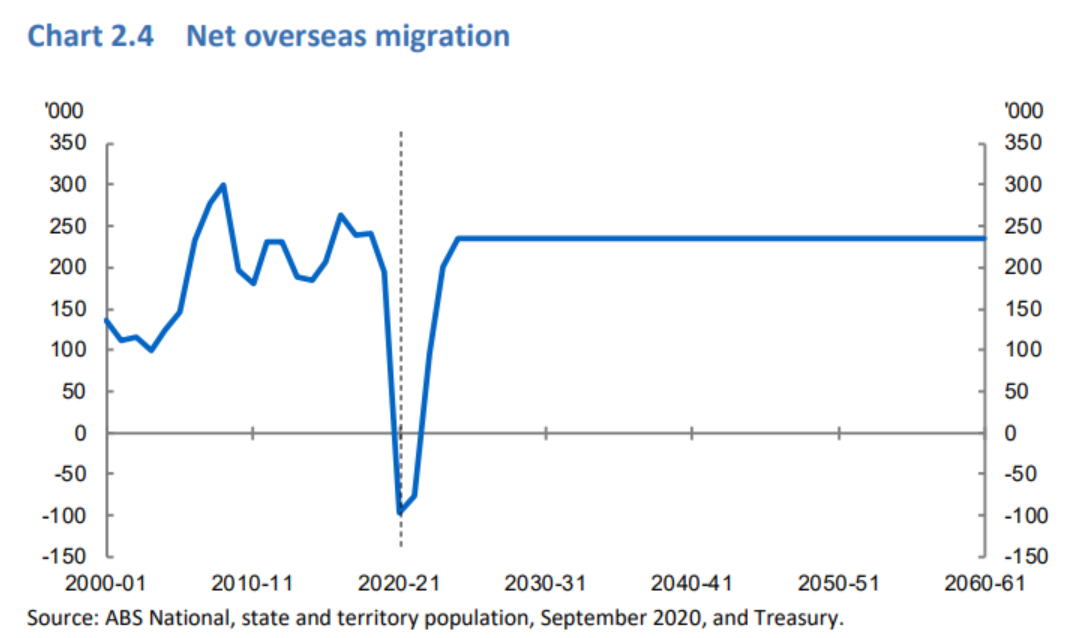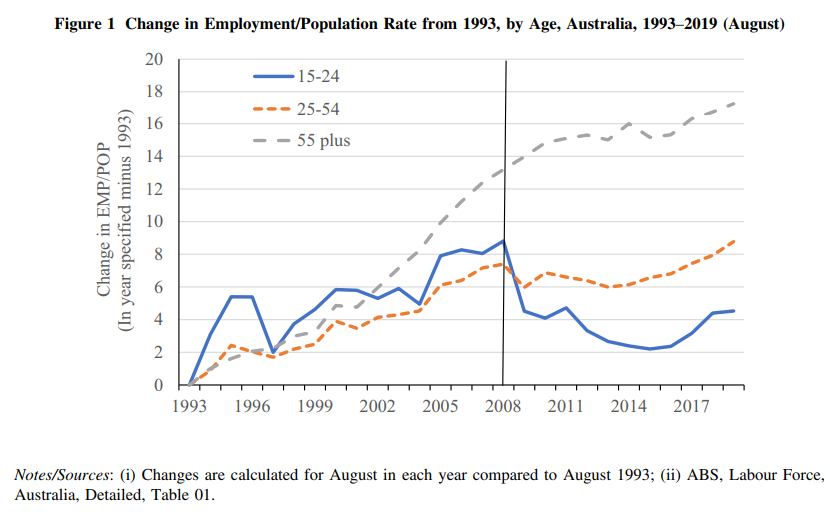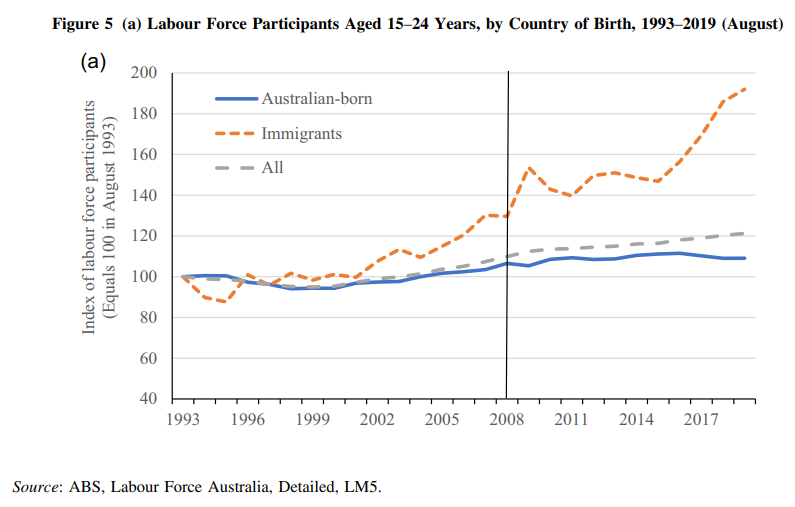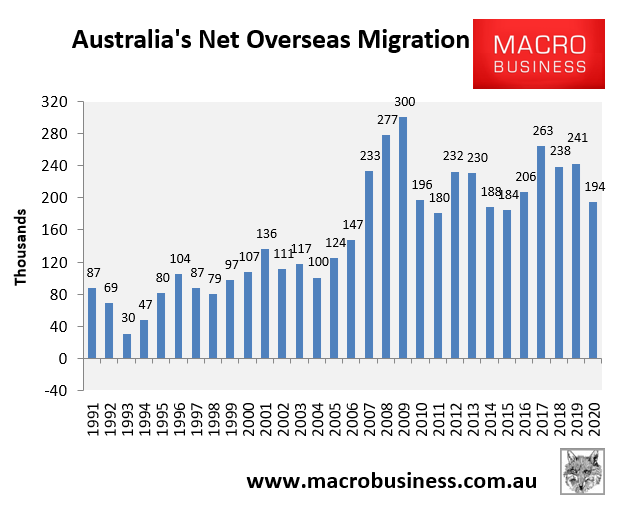The Grattan Institute is one of the nation’s biggest supporters of ‘Big Australia’ immigration, repeatedly spruiking the benefits of a strong migration program while ignoring the costs.
With this background in mind, it was unfortunate yesterday to read the CEO of the Grattan Institute, Danielle Wood, lament that younger Australian workers are struggling for job opportunities, suffering from poor wage growth, and cannot afford housing:
“While weak wages growth has bitten all age groups, for younger people it has been particularly pronounced,” Grattan Institute chief executive Danielle Wood said.
“Workers aged 20-34 experienced close to zero growth in real wage rates from 2008 to 2018”…
Ms Wood said young people now spend less on discretionary items such as clothes, alcohol and recreation than the same age group three decades ago, but spent more on essentials such as housing, power, food, medical care and transport.
She said the overall effect of flatlining wages and rising underemployment was that under-35s in 2018 had, on average, lower incomes than those of the same age a decade earlier.
“The Australian Productivity Commission has found that people joining the workforce in the past decade have graduated into less attractive occupations on average, for a given level of education, than previous generations.
“And with young university graduates moving into lower-level roles, other young people without the same qualifications are pushed even further down the ladder – in jobs more likely to be characterised by part-time and casual work.
“This has been accompanied by a big rise in underemployment – workers not getting all the hours they want – particularly among younger age groups.”
Ms Wood said the housing price boom was in no small way responsible for the growing schism between the wealthy older generations and the rest…
“The fact remains that it is now only the richest ones, or the ones with the richest parents, that can afford to [own a home],” Ms Wood said.
I agree entirely. But what is to be done about it?
Our main contention is that worsening employment outcomes for the young in the decade following the GFC were caused primarily by increases in labour supply which have meant extra competition for jobs sought by the young, and resulted in them being ‘crowded out’ from employment…
For the young who are in full‐time education, the main source of increased labour market competition in the decade after the GFC was from within their own age group — from an increased number of young international students and holiday travellers seeking part‐time work.
Figure 5a shows the proportionate growth in labour force participants aged 15–24 years who are Australian‐born and immigrants. Between 2004 and 2019 the annual rates of growth in labour force participants in these groups were respectively 0.6 and 3.9 per cent. Over the same period, immigrants accounted for 52.6 per cent of growth in the labour force aged 15–24 years, despite being only 12.6 per cent of that labour force in 2004…
What is also critical is that the occupational composition of employment of recent young immigrants (aged 15–24 years who arrived in the last 2 years) is similar to full‐time students of the same age (Australian‐born and immigrants who had not arrived in the past 2 years). Young newly arrived immigrants are therefore most likely to be seeking jobs in the same small set of occupations into which it has been shown that young persons in full‐time education are largely segmented. This suggests that the increase in labour supply by young immigrants post‐GFC substantially increased competition for employment in those occupations…
For young persons who are not attending education full‐time, increased labour market competition has come from relatively strong and steady growth in aggregate labour supply…
In the years prior to the GFC the increase in labour supply was outpaced by employment growth. However, since the GFC that pattern has reversed. This has meant that the rate of labour underutilisation — the proportion of available hours of labour supply that are not being utilised in employment (reflected in unemployment or under‐employment) — has increased.
The increasing gap between labour supply and employment following the GFC has had a disproportionate negative impact on employment outcomes for the young…
In making forecasts of the labour market outlook for the young, it is also necessary to consider what may happen to labour supply. In the years prior to the onset of COVID‐19 there had been strong growth in aggregate labour supply; and relatively high rates of growth in the population aged 15–24 years had been projected for the 2020s. The impact of COVID‐19, of course, has been to substantially reduce that projected growth.
Australia’s net overseas migration (NOM) jumped from an average of 90,500 between 1991 and 2004 to an average of 219,000 between 2005 and 2019 – representing an annual average increase in immigration of 140%:
Such strong growth not only suppressed the wages of younger Australians in particular, but also helped to inflate the cost of housing, especially across Sydney and Melbourne.
Yet Grattan explicitly supports rebooting mass immigration post-COVID, as projected by the Intergenerational Report:

Back to a ‘Big Australia’.
We know the result in advance. Australia’s youth will face reduced job opportunities and wages, while also being forced to live in smaller, more expensive housing.
The immigration issue highlights the contradictions of the Grattan institute across a number of disciplines:
- Grattan laments the poor wages and employment opportunities provided to Australia’s youth, but contradictorily supports flooding the labour market with migrants to compete for jobs;
- Grattan laments Australia’s poor progress at meeting its ‘net zero’ emisions reduction goals, but contradictorily supports Australia growing its population by a projected 13.1 million (~50%) over the next 40 years, which will necessarily drive up emissions and wreck the natural environment;
- Grattan continually bemoans Australia’s infrastructure waste, but ignores the extreme immigration driving the demand for expensive new infrastructure; and
- Grattan continually laments Australia’s lack of housing supply and poor planning, but contradictorily supports the mass immigration driving the problems.
In short, the Grattan Institute suffers from a chronic case of cognitive dissonance and needs to start examining issues as a whole, rather than in silos.




